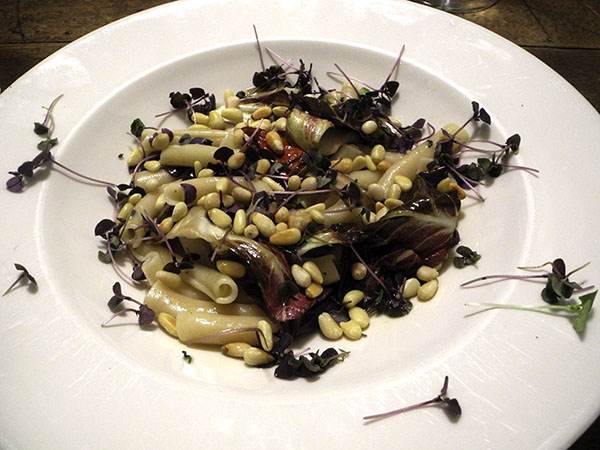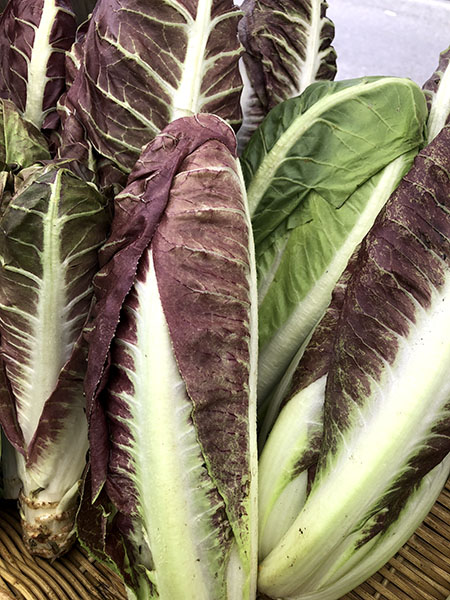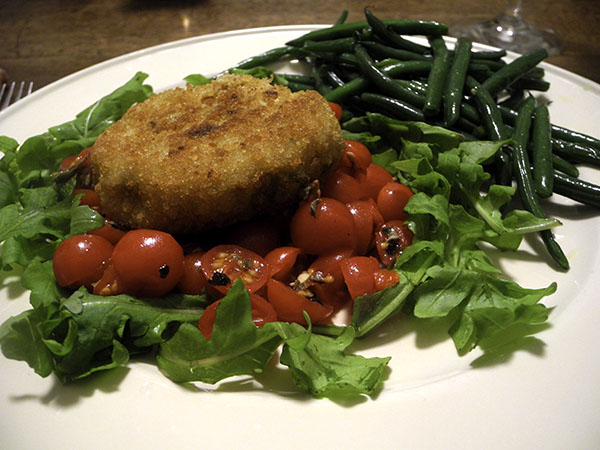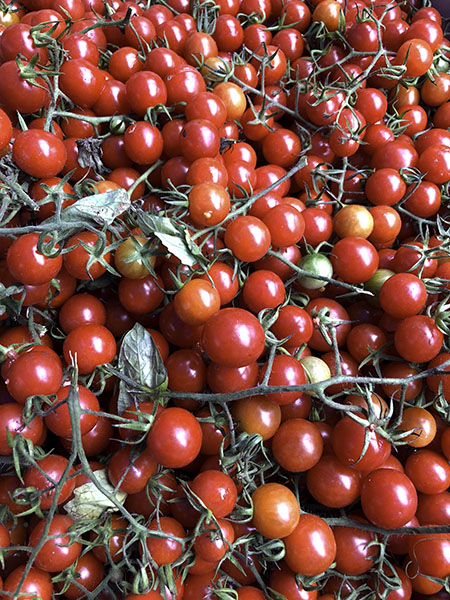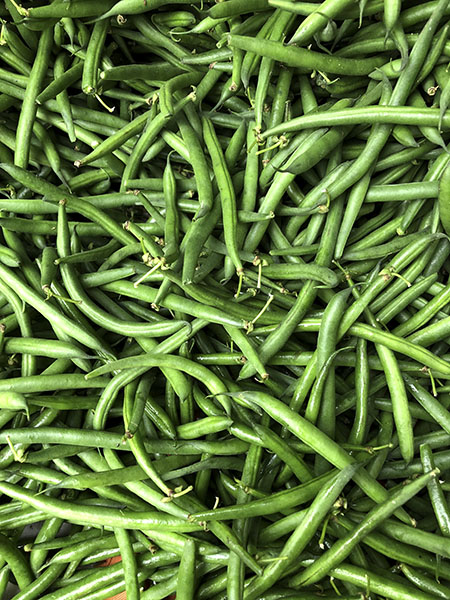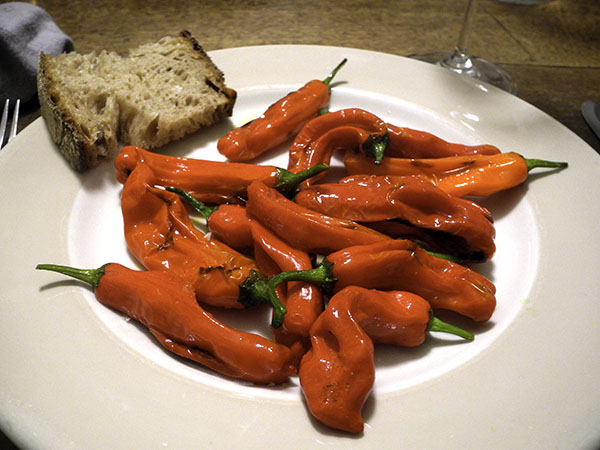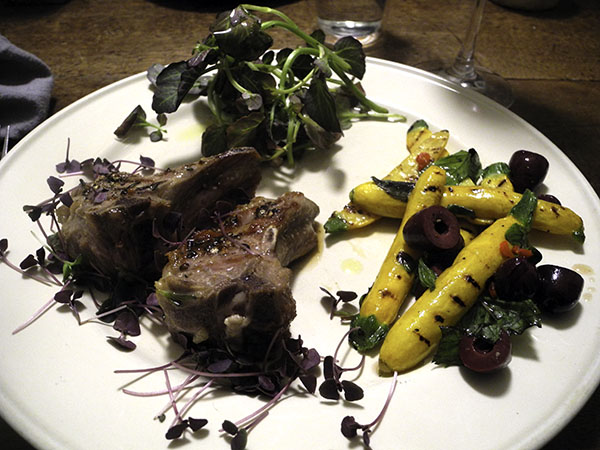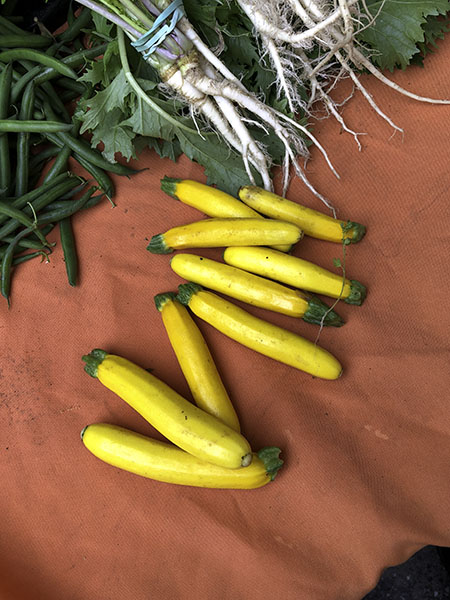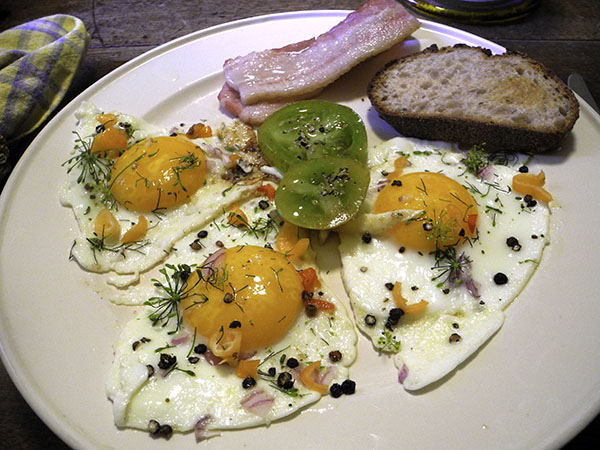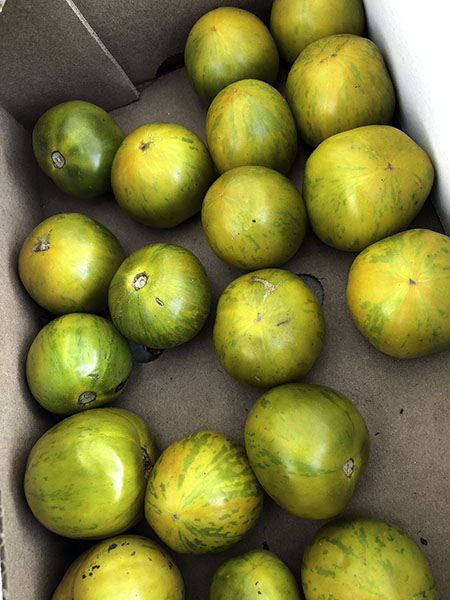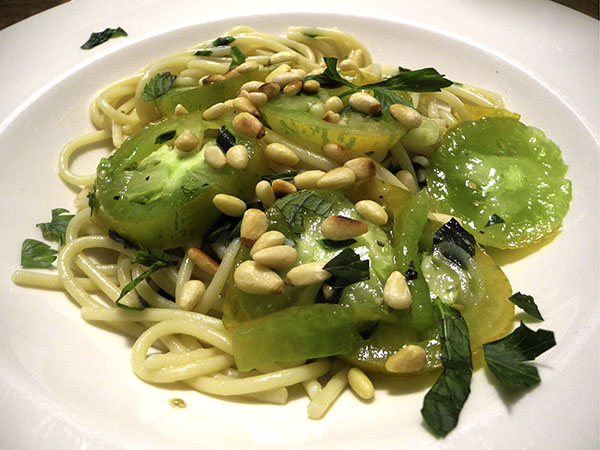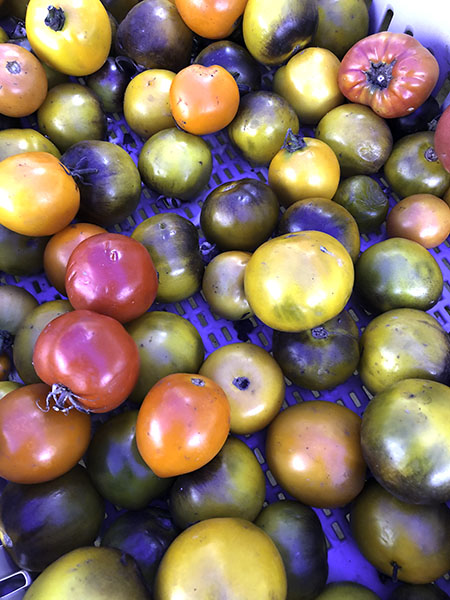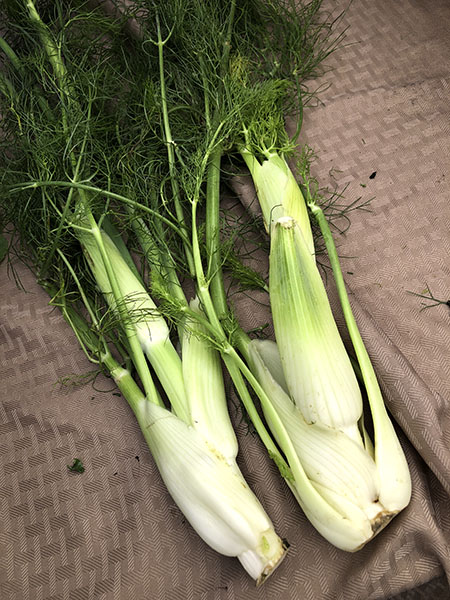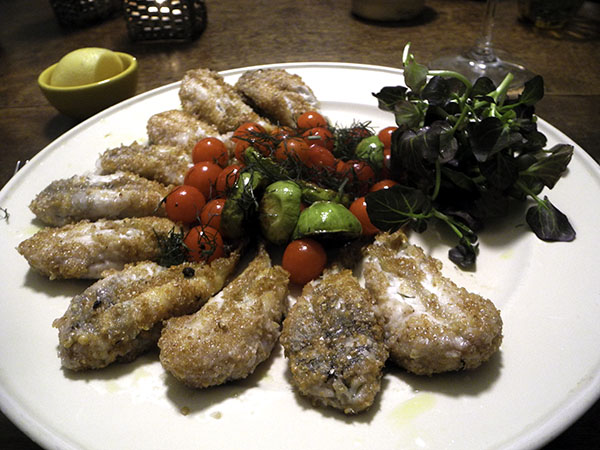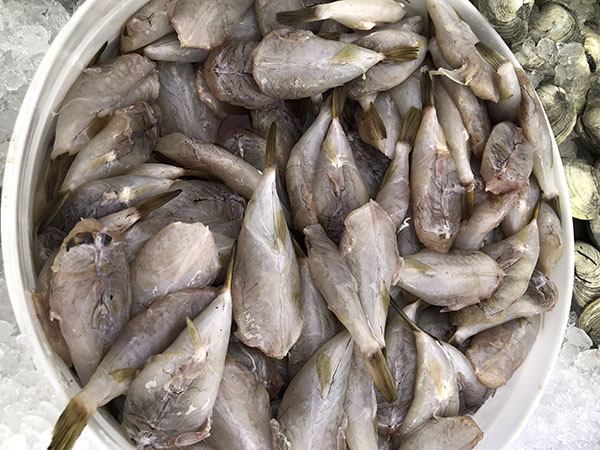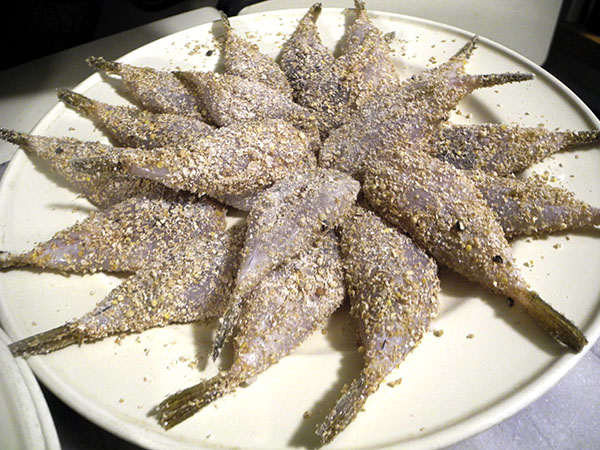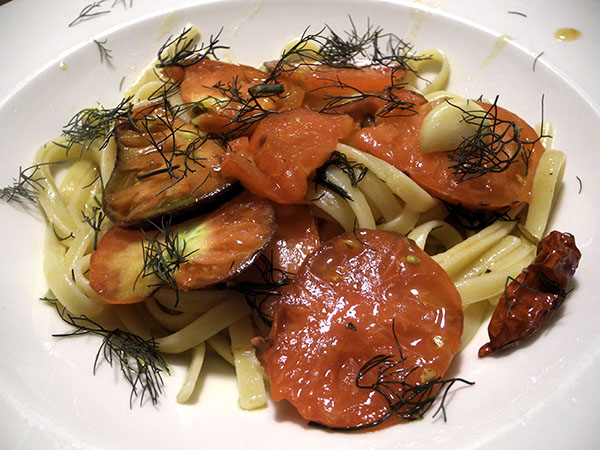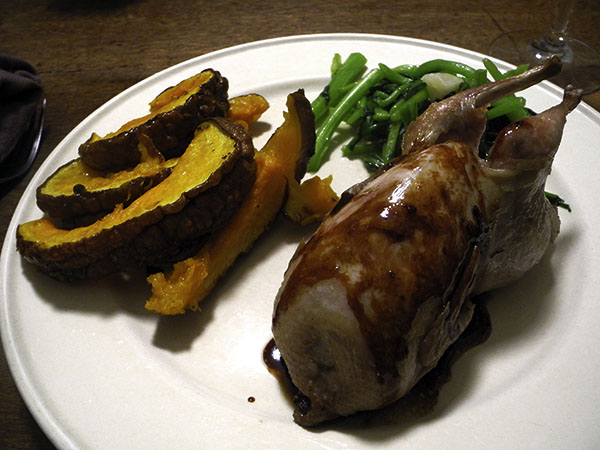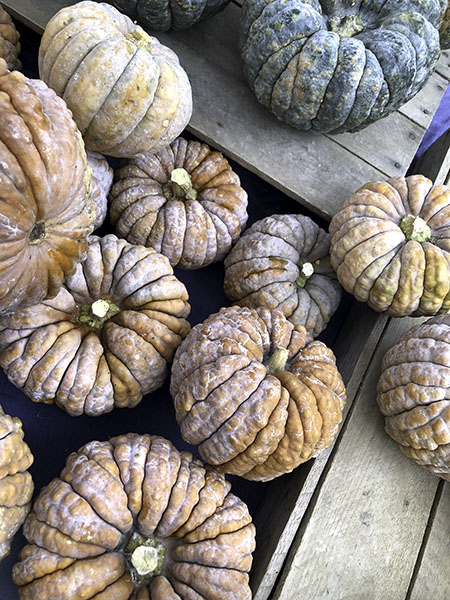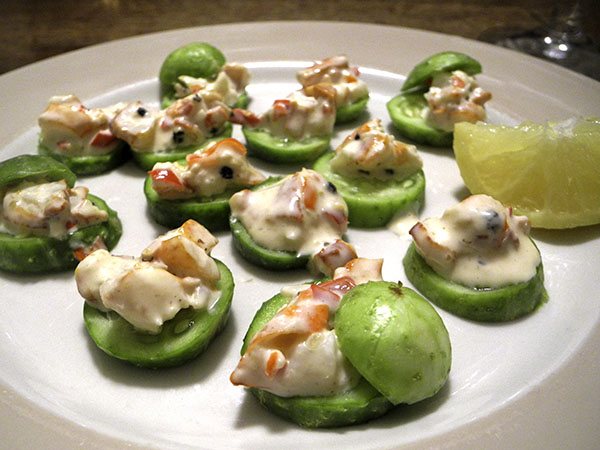
(there weren’t enough hats to go around)
I spotted the lobster-red blur under the ice at her seafood stall, but Jan told me the two small cooked claws were all they had left that day of their catch of homanus americanus. That’s all I needed to hear: I could take home the lobster and a smaller than usual portion of some other seafood, and either combine them in a single course or serve them separately, the lobster worked into an appetizer.
I decided on the appetizer, after I found this recipe on line: a ‘lobster salad’ although the proportions of the ingredients called for were for something with 10 times more lobster than I was able to take home that day.
-
four small Jamaican burr cucumbers from Norwich Meadows Farm, unpeeled, sliced about 1/4″ thick, each used as a disk to support a dollop of a mix of chopped lobster from the fish monger’s only traps off eastern Long Island (after cracking the shells, I ended up with only 1 5/8 ounces meat, which equated to about $16 per pound); a couple tablespoons of a really good locally-prepared mayonnaise, Sir Kensington’s, plain, Classic Mayonnaise (made by ex-Brown students, with headquarters in SoHo); a bit of both a sweet habanada pepper and and a mildly-spicy aji rico pepper, both finely chopped; sea salt and freshly-ground black pepper; and a pinch or two of dried fenugreek from Bombay Emerald Chutney Company(purchased at the Saturday Chelsea Farmers Market) [I think I should have included some lemon zest, but the mix was really good exactly as I had improvised it this time]

The main course was a house classic, except for the addition of tomatoes this time to the familiar baked dish of potatoes and cod. I think I added the tomatoes mostly because of the relatively small amounts of both fish and potato that I had available this time, but it worked really well, and the display was pretty spectacular.
They look, disconcertingly, a bit like strawberries, which may have been appropriate, since the farm from which both the potatoes and the tomatoes came is ‘Berried Treasures’, named for Franca Tantillo‘s specialties, strawberries and potatoes.
The dish was assembled in 2 stages.
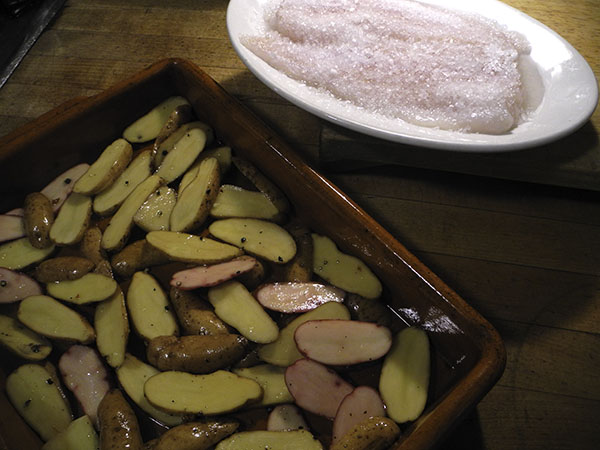
- two 5-ounce cod fillets from P.E. & D.D. Seafood in the Union Square greenmarket, cooked using the basics of a recipe from Mark Bittman which I had come across many years ago: the cod washed and rinsed, placed in a platter on a bed of coarse sea salt, with more salt added on top until the pieces were completely covered, then set aside while a bed of potatoes was prepared for them by slicing lengthwise into 3 or 4 sections each (to a thickness of roughly 1/4″) a total of 10 or 12 ounces or so of La Ratte fingerling potatoes (including 3 red thumb fingerlings from Willow Wisp Farm to make up for the small number of La Ratte), tossing them in a large bowl with olive oil, sea salt, freshly-ground black pepper, and a large section of a large orange/gold home-dried Habanada pepper (bought fresh last fall from Norwich Meadows Farm), arranging the potatoes, overlapping, in a rectangular glazed ceramic oven pan, and cooking them for 25 minutes or so in a 400º oven, or until they were tender when pierced, but not fully cooked, and then, the cod having already been thoroughly immersed in many fresh changes of water to bring down the saltiness (the soaking process somehow gives the fish more solidity, which can be easily felt while it’s being handled it at this point; it’s kinda sexy), draining and drying the fillets before placing them inside the pan on top of the potatoes, drizzling them with a little olive oil and sprinkling them with some freshly-ground black pepper, then blanketing them with thin slices of several heirloom tomatoes (each the same kind, mahogany and red in color) from Berried Treasures Farm, the tomatoes also seasoned, lightly, and the pan returned to the oven for about 8 or 9 minutes (the exact time depends on the thickness of the fillets), removing the fish with a spatula (or, much better, two spatulas), along with as much of the potatoes as can be brought with each piece, and arranging everything as intact if possible onto the plates, returning to the pan for the remainder of the potatoes, the servings garnished with chopped bronze fennel from Quarton Farm
